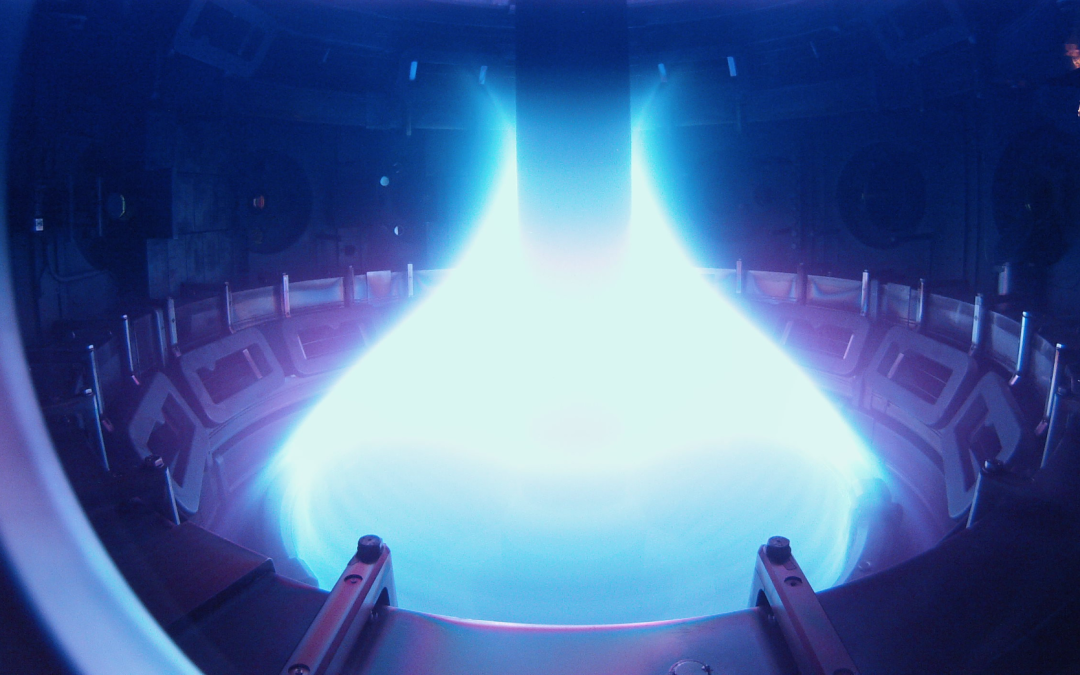By Jana Sabra | Staff Writer
Nuclear Fusion: An Unlimited Clean Energy Source
With the increasing impact of climate change on every aspect of our lives and the deterioration of our sole sanctuary’s health, global clean energy sources are urgently needed. Current global actions are directed toward limiting fossil fuel consumption while uniting toward common but differentiated responsibilities on environmental sustainability. While energy security remains a top concern of every nation, emerging scientific studies and technologies are moving towards finding a suitable diversified energy mix to secure their current needs while accounting for the environmental bill and future generations’ needs. From here, nuclear energy emerges as a beacon of hope to save what is left of our planet’s nature and potentially provide us with an unlimited source of clean energy.
The “good” nuclear energy is based on nuclear fusion, a process
that mimics the sun’s nuclear fusion reaction in which lighter nuclei fuse together, creating heavier nuclei and releasing energy in the form of heat that could then be converted by relevant generators into electricity. Here, hydrogen isotopes (deuterium and tritium) are introduced into a fusion reactor where they are subjected to extremely high temperatures and therefore fuse. As a result, heavier nuclei (i.e., helium) are released, along with neutrons and high thermal energy. The high thermal and neutron energies are then harnessed to heat up water, changing its phase and converting it into steam — a clean energy source ready for a wide array of applications.
Deeper into the process
The fusion reaction widely takes place inside a toroidal chamber with magnetic coils known as Tokamak. Tokamak is a device that uses a powerful magnetic field to confine plasma in the shape of a torus generating the heavier nuclei and emitting thermal energy. The electrically charged plasma formation is activated by the giant magnets inside the Tokamak after the injection of a deuterium-tritium fuel mix. By inducing high temperatures of about 150 million degrees Celsius, the fusion of the atoms is forced, defying their repulsive nature.
Clean and unlimited
Nuclear fusion is quite different from nuclear fission’s destructive environmental nature. Consequently, nuclear fusion is a more widely-used technique toward the nuclear energy revolution. It is efficient as it generates four million times more energy than burning fossil fuels like coal, oil, and gas. Its efficiency is supported by its safety — as a self-limiting process, it can ‘switch off’ upon uncontrollable conditions, naturally terminating itself and losing its energy very quickly without leading to major damages. Additionally, the fusion reaction generates minimal radioactive nuclear waste and no carbon dioxide. It only necessitates low carbon quantities in the fuel reactor. Furthermore, deuterium and tritium (which could be derived from heavy water and lithium, respectively) are abundant and widely available fuels. That said, only a few grams of either can produce a terajoule of energy — an amount that meets the energy demand of a citizen in a developed country for sixty years!
A continuing effort
Current accelerating global technologies are competing to harness the unlimited clean energy of nuclear fusion. In 1958, fusion research was declared an international collaborative venture at an Atoms for Peace conference in Geneva. Today, leading Tokamak nuclear fusion reactors include the Joint European Torus (JET) that is the largest and most powerful operational Tokamak machine in the world, operated by the UK Atomic Energy Authority (UKAEA) in Oxford, the International Thermonuclear Experimental Reactor (ITER) project in Southern France, and the Experimental Advanced Superconducting Tokamak (EAST) reactor in China which broke the record for the longest sustained nuclear fusion in January 2022.
Nuclear fusion stands as a great candidate for an unlimited clean energy source that is needed to achieve the sustainability agendas by 2030, the net-zero goals by 2050, and the Paris Agreement’s 1.5 degrees Celsius global warming limit. Innovation in the nuclear fusion industry is needed to commercialize its uses, thus contributing to the rescue of what is left of our dear planet.


Interesting and helpful article!
This article is very informative and easy to read / understand. The topic is very interesting and beneficial. Looking forward to read similar articles in the near future. Thanks Jana.